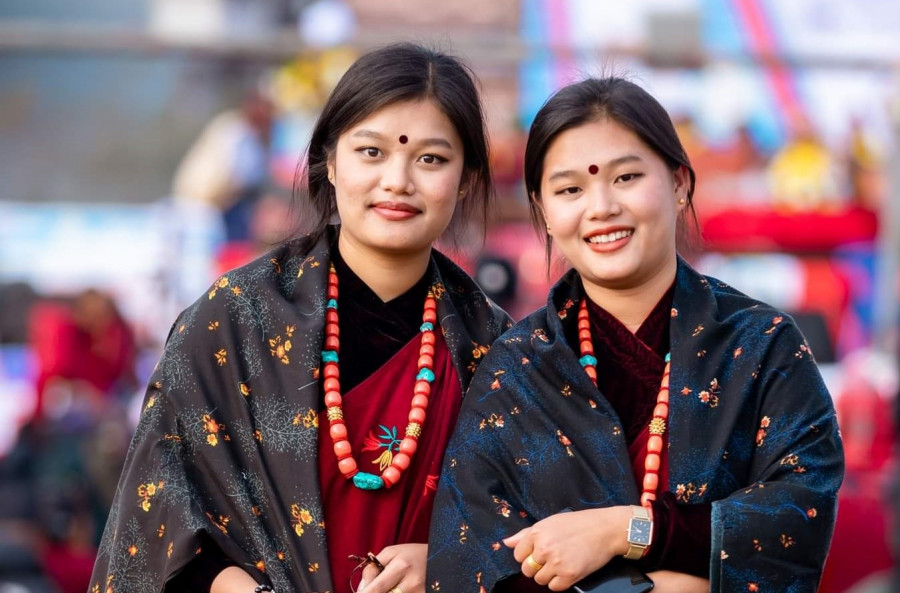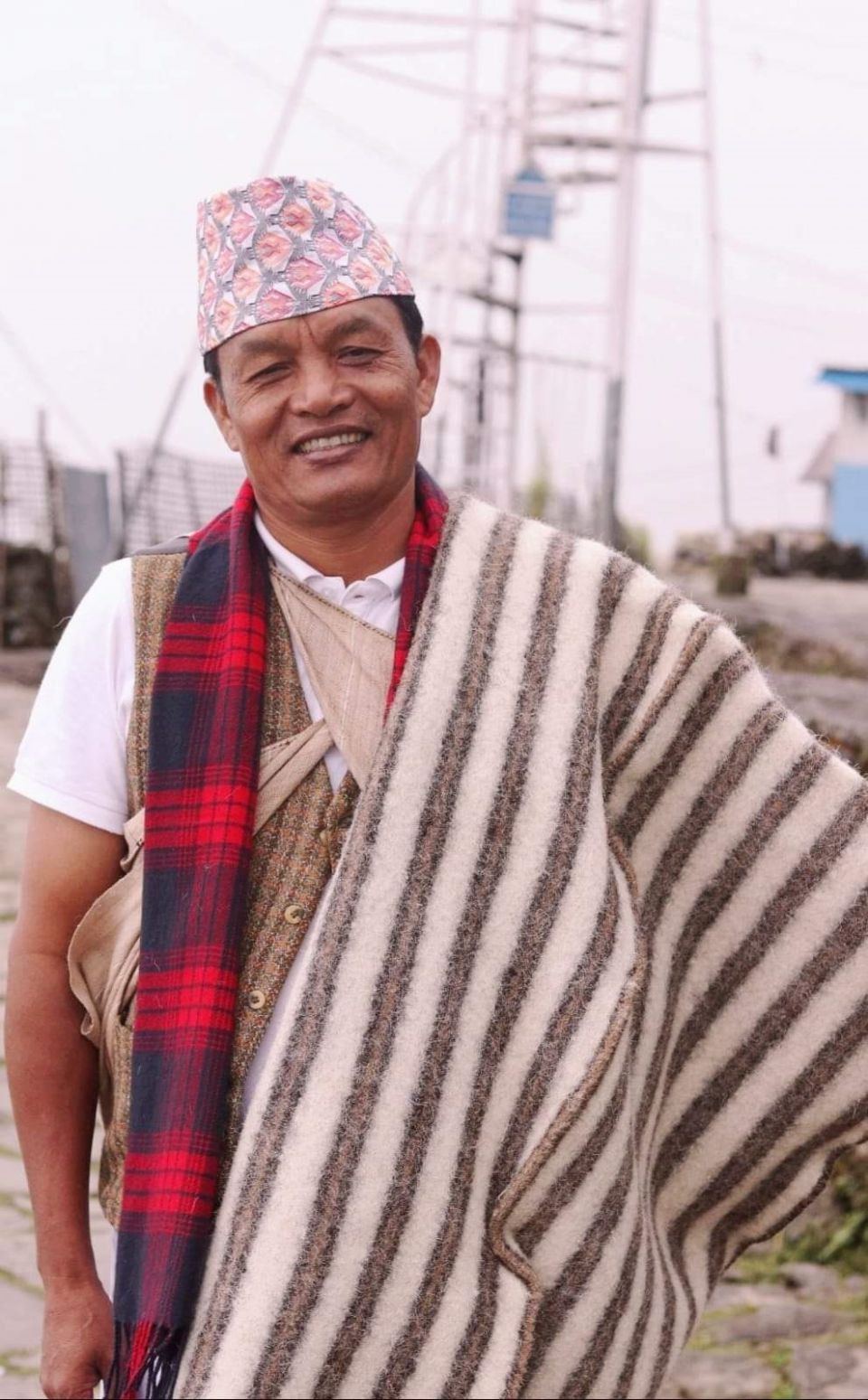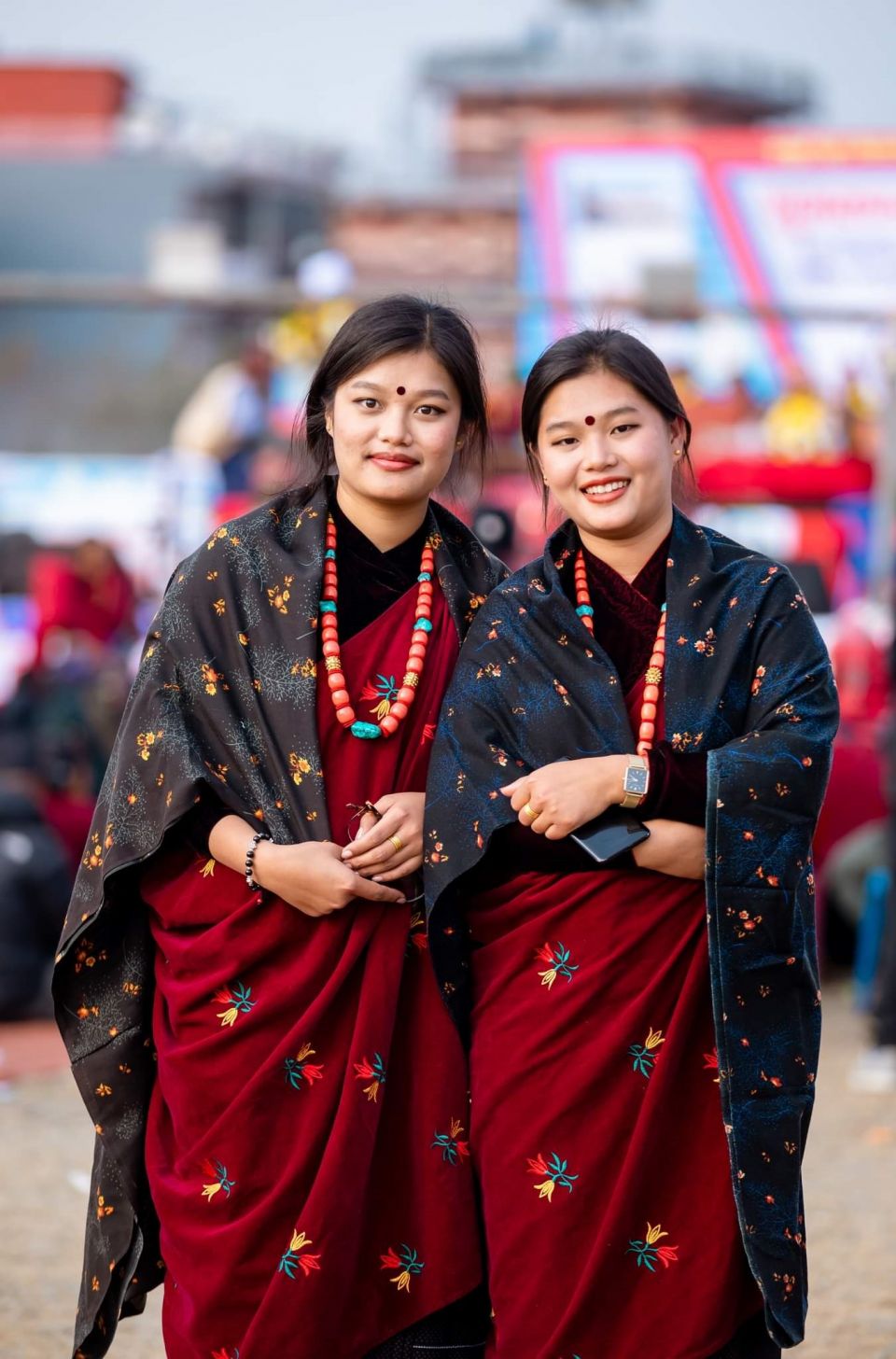
Bimala Gurung, managing director at Sanskar School, says that from her childhood till now, she has seen drastic changes in the Gurung attire. And she doesn’t know how she feels about it. The classic way to wear the Gurung dress, with the chit ko gunyo cholo and ghalek is being replaced with more modern, Bollywood-inspired modifications. “Young people nowadays rarely have proper knowledge when it comes to the Gurung costume,” she says.
While realising that there is a need to march with the time, there is also the dreary fact that the Gurung dress is losing its originality and purity. “If one really wants to wear a Gurung dress, one must wear it properly and respectfully.”
Some young Gurung individuals also take Bimala’s stance. Sajan Gurung, 28, a visa processing officer, agrees that the traditional Gurung attire should be worn in its original form. “Currently, it appears as though we are emulating Bollywood. There is a sort of degradation in the name of style.”
For the Gurung community, the clothing serves as a symbol of resistance and celebration. Asha Gurung, the managing director of Royal Alina’s Restaurant at Baneshwar, explains that wearing the Gurung dress gives her self-confidence. But recently, she sees that many are opting for lehengas instead of the classic Gurung lungi. “The distinctiveness of our culture is getting lost. Sometimes it is important to resist change, especially when it comes to loss of tradition.”
Historically, Gurung people have been residents of the mountains and hills. This climate explains how rudimentary clothing was worn. According to Paru Gurung, a designer who exports traditional dresses to the UK and Hong Kong, Gurung men wear a garment called jama that wraps around the waist and falls to mid-thigh. They also wear a blouse-style shirt or bhoto secured with ties across the front of the body. A long length of fabric is worn as a belt and fastened around the waist, bhangra (originally made from sisnu and can be found in Sikles, Kaski).
 Photos: Courtesy of Hum Bahadur Gurung
Photos: Courtesy of Hum Bahadur Gurung
Gurung women, on the other hand, wear a long, pleated skirt called lungi, with chit ko gunyo cholo at the front. Ghalek is a piece of fabric that is slung across the body from one shoulder to the waist to create a bag for carrying items. Blue patuki is tied in the waist to protect the lungi, and side pachhyauri is worn. Dori is worn in the hair, kantha muga ko mala made up of red coral stones and is used as an ornament. Anklets and bangles are also common.
Hum Gurung, regional project manager at Southeast Asia Pacific Forest Governance in Kuala Lumpur, Malaysia, believes the early Gurung attire was influenced by the Lahure culture (Lahure being the term to denote Nepali men deployed in foreign armies). “The Nepali men mingled with Malaysians and Indians,” he says. The Gurkhas deployed during World War I and II imported the word 'lungi'. Though the Gurung dress looks a little complex, it was actually convenient for the times. Gurung women wore ghalek to carry food and money back in the day when there were no bags.
Kshetra Gurung, the veteran singer who voiced the iconic song ‘Chhatima Mero or Kalilo tama lai’, shares his sentiments about how youths these days have stopped wearing blue patuki on their waist. “Everyone has the right to wear what they want. But there’s something special about wearing the traditional dress just as it was,” he says.
According to Tichan Gurung, the chairwoman of Tamusyo Hyula Chhojdhi Gurung Mahila Rastriya Parishad, the Gurung attire represents their history. “Our clothing conveys a message. The blue patuki stands for the sky. Our cholo is maroon colour to symbolise our heart.”
 Photos: Courtesy of Hum Bahadur Gurung
Photos: Courtesy of Hum Bahadur Gurung
Anita Gurung, a freelance journalist who works for Highlights Tourism, thinks that fashion is evolving and that people are becoming more inventive, but she doesn’t prefer how the Gurung attire has changed so drastically. She recalls an incident when she wore the attire for an event, and in the traffic jam, a fellow driver asked if there was a dohori event. “I was shocked. I don’t want my dress to be identified like that. Yes, it is being promoted, but our cultural dress carries our legacy.”
Culture activist Jagman Gurung expresses that with globalisation, dresses have lost their authenticity. “Usually during festivals, men used to wear bhangra with bhoto and khachad but now they wear suit, coat and pants.”
Anu Gurung, the proprietor of Anuricha Designer Studio in Bhaisepati, has a different opinion. She believes that it shouldn’t matter if the traditional attire gets a minor re-vamp because change is inevitable. “I believe that creativity is essential, and I am pleased that Gurung dresses are becoming more well-known and fashionable. Lehenga is easier to wear than the lungi, so brides incorporate it into the Gurung wedding ceremony. As a fashion designer, I don’t believe that we are destroying cultural attire.”
Sari Gurung, a Lamjung–based member of Bhakunde Tamu Samaj, also agrees that some changes are necessary for comfort. “Lehenga is very easy to wear. I don’t have to worry about the tikisa and patuki while wearing it.”











